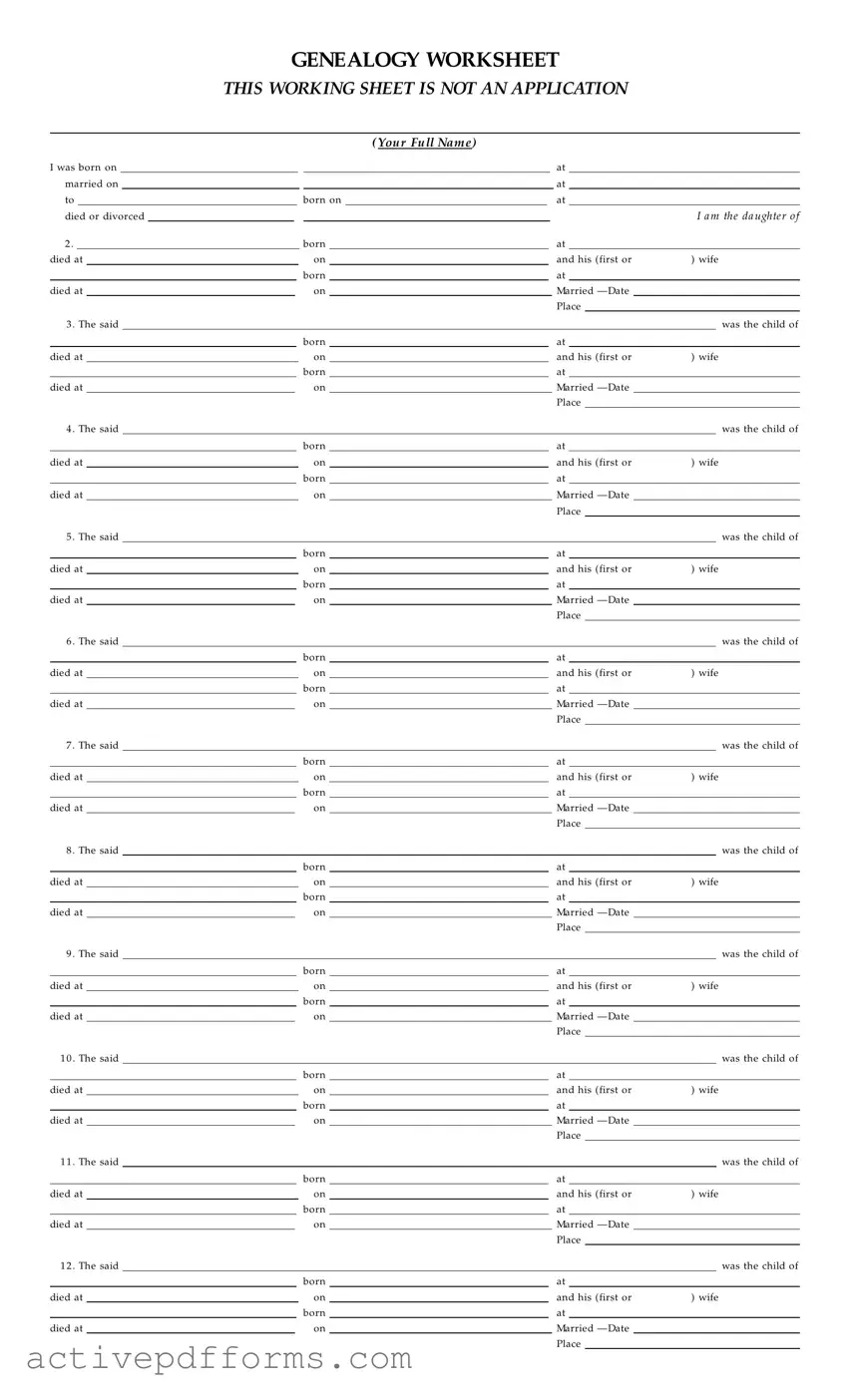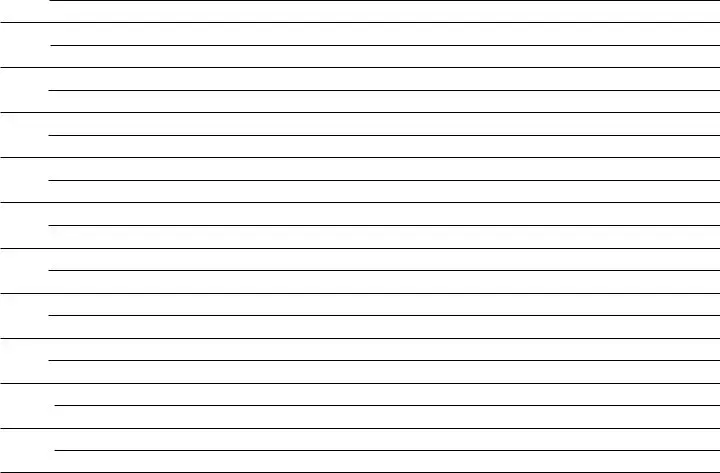Embarking on a journey through one's ancestral past can be a fascinating yet complex endeavor, especially when aiming to establish a connection to pivotal historical events like the American Revolution. The DAR Genealogy Worksheet form provides an organized framework for individuals to document their lineage, tracing back to ancestors who contributed to American independence. This detailed worksheet serves not just as a record but as a guide, prompting users to meticulously note each ancestor's birth, marriage, and death details, alongside their respective spouses and the connections between generations. It emphasizes the importance of substantiating each claim with solid proofs, ranging from wills to tombstone inscriptions, thus ensuring that tradition does not overshadow factual evidence. Furthermore, the worksheet aids in cataloging the services rendered by the revolutionary ancestor, including their role, location, and acts during the revolution, supported by both published and unpublished records. By providing spaces to list references for lineage and related documentation, the form acts as a comprehensive tool for genealogy enthusiasts to not only explore but also validate their heritage, laying down a path that connects the past with the present in the pursuit of acknowledging their ancestor's contributions to the foundation of the United States.


